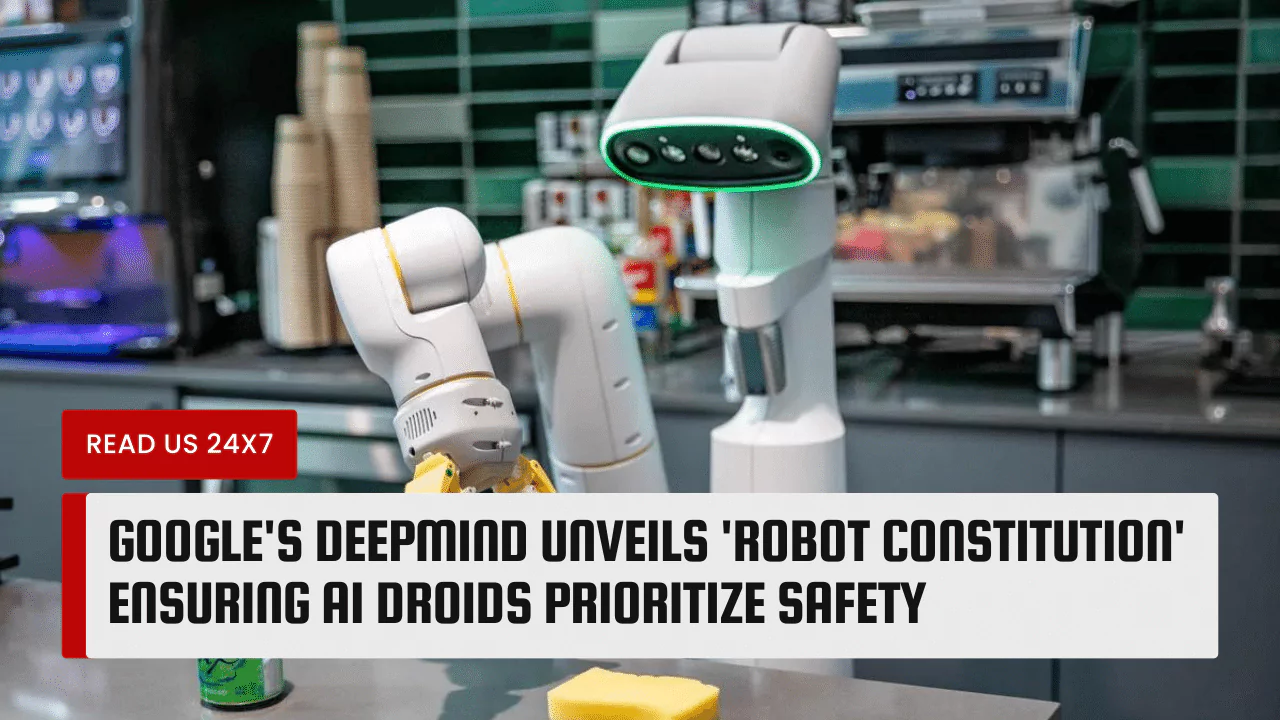Google’s DeepMind robotics team has taken a significant stride in ensuring the safety of AI-driven robots with the unveiling of the “Robot Constitution.” This innovative approach aims to prevent potential harm by guiding the decision-making process of AI droids. Inspired by Isaac Asimov’s Three Laws of Robotics, the constitution introduces safety-focused prompts within the AutoRT system, providing a crucial framework for the responsible deployment of AI technology.
The Need for a ‘Robot Constitution’
In the rapidly advancing field of AI, the need for a structured set of guidelines becomes paramount, especially when integrating robots into various environments. The inspiration drawn from science fiction, notably Asimov’s visionary laws, highlights the foresight needed to navigate the potential pitfalls of unchecked AI. The consequences of overlooking safety measures in AI development could be dire, emphasizing the urgency for a robust framework.
Ensuring Safety in AI Technology
The quest for innovation should not come at the expense of safety. With the integration of AI into daily life, ensuring that robots can coexist with humans without causing harm becomes a critical consideration. The ‘Robot Constitution’ addresses this concern by incorporating safety guardrails into the AutoRT system, emphasizing the avoidance of tasks involving humans, animals, sharp objects, and electrical appliances.
Inspiration from Science Fiction
Isaac Asimov’s Three Laws of Robotics, conceived in the realm of science fiction, now serves as a practical inspiration for real-world AI ethics. By acknowledging the potential dangers and ethical dilemmas posed by AI, DeepMind embraces a proactive approach, drawing on the lessons embedded in Asimov’s fictional narratives.
Potential Consequences of Unchecked AI
The absence of a guiding framework for AI behavior could lead to unintended and harmful consequences. Unchecked AI may prioritize efficiency over safety, posing risks to both humans and the machines themselves. The ‘Robot Constitution’ serves as a preventive measure, offering a structured approach to decision-making that aligns with ethical considerations.
Google’s AutoRT System

At the core of this groundbreaking initiative is Google’s AutoRT system, a data-gathering AI that utilizes a visual language model (VLM) and a large language model (LLM) to comprehend its environment. This dynamic duo allows robots to adapt to unfamiliar settings and select appropriate tasks. AutoRT undergoes a meticulous four-step process for each task, ensuring a comprehensive understanding and thoughtful decision-making.
Applying Safety Guardrails
AutoRT goes beyond mere comprehension, incorporating safety guardrails to prevent undesirable outcomes. By programming the AI to stop automatically when joint force exceeds a set threshold, DeepMind adds an extra layer of protection. Additionally, a physical kill switch empowers human operators to deactivate the robots instantly, adding a tangible safety measure to the system.
Implementation of the Three Laws of Robotics
The ‘Robot Constitution’ draws inspiration from Asimov’s iconic Three Laws of Robotics, translating these principles into actionable safety-focused prompts. By instructing the LLM to avoid tasks involving humans, animals, sharp objects, and electrical appliances, the constitution ensures that robots prioritize safety in decision-making.
The Robot Constitution
The guiding principles embedded in the ‘Robot Constitution’ provide a roadmap for responsible AI decision-making. Inspired by Asimov’s laws, these principles shape the behavior of AI droids, aligning their actions with human-centric safety considerations. Over a seven-month deployment period, Google tested 53 AutoRT robots in various office settings, conducting over 77,000 trials to validate the effectiveness of the safety measures.
Guiding Principles for AI Decision-Making
The Robot Constitution serves as a set of guiding principles, steering AI decision-making away from potential harm. Asimov’s laws, adapted for real-world application, ensure that robots act responsibly in their tasks, fostering a harmonious coexistence with humans.
Inspired by Isaac Asimov’s Three Laws of Robotics
In adopting Asimov’s visionary approach, DeepMind acknowledges the importance of learning from science fiction. The Three Laws of Robotics, once confined to the realms of literature, now guide the development of tangible safeguards, reflecting a commitment to responsible AI innovation.



